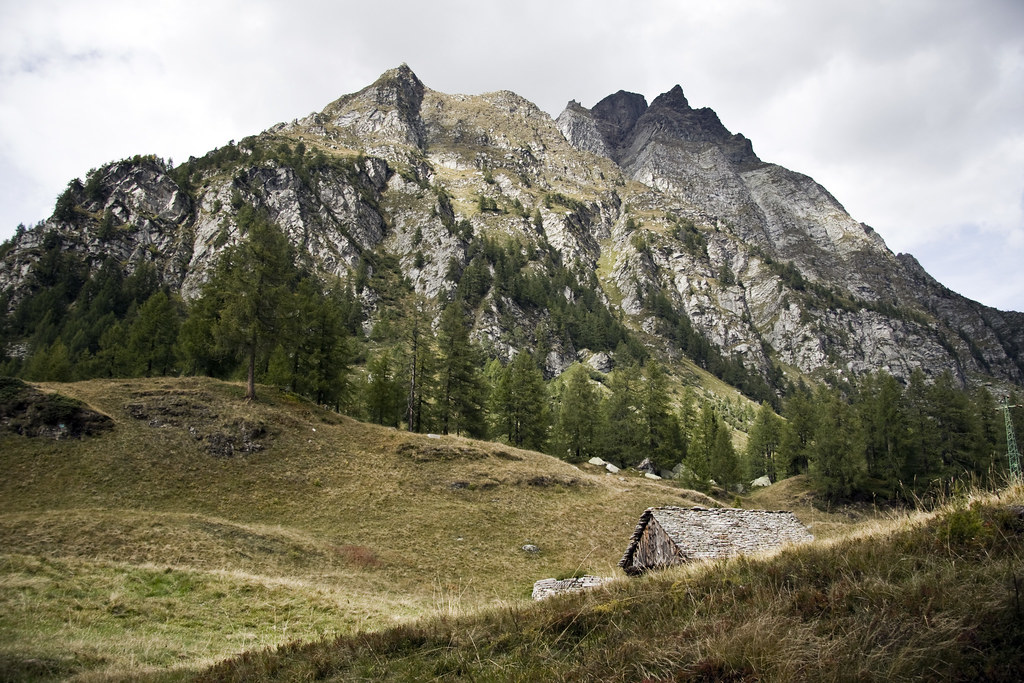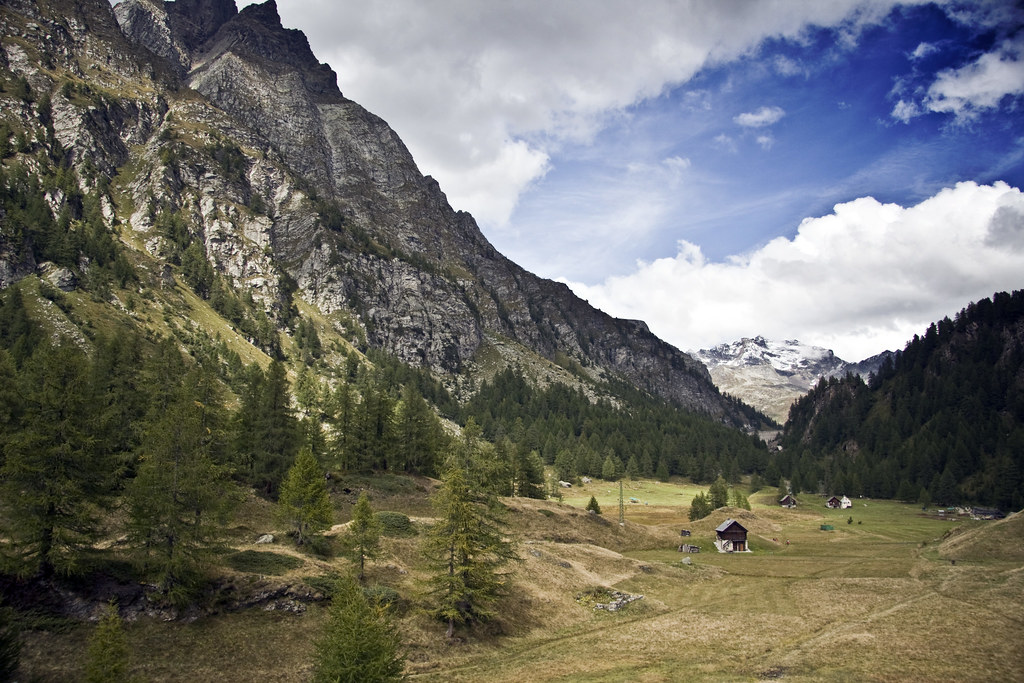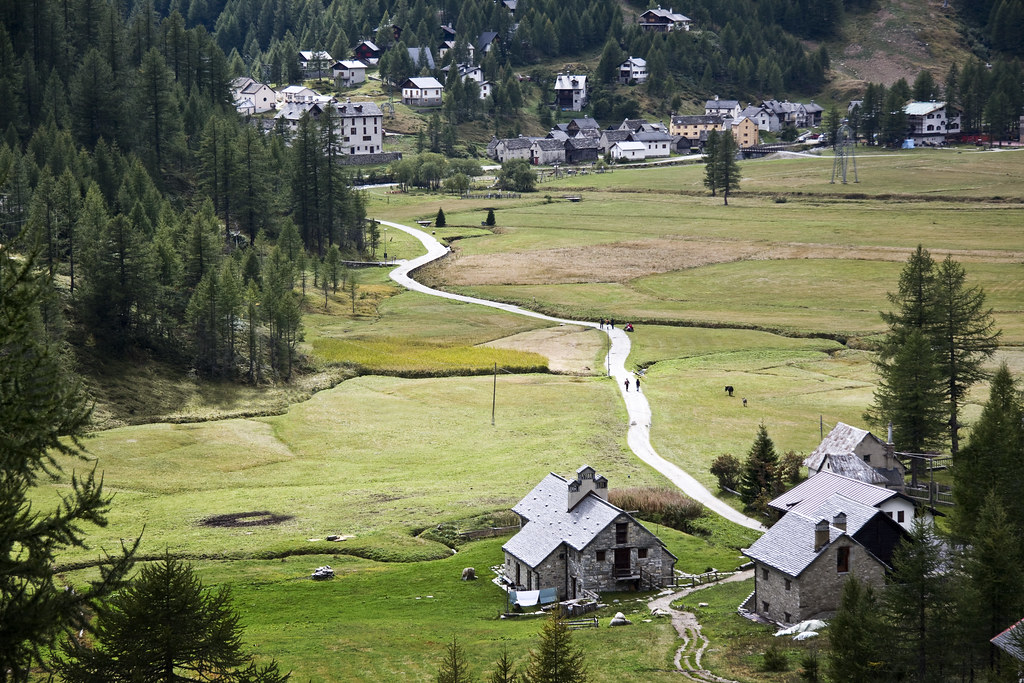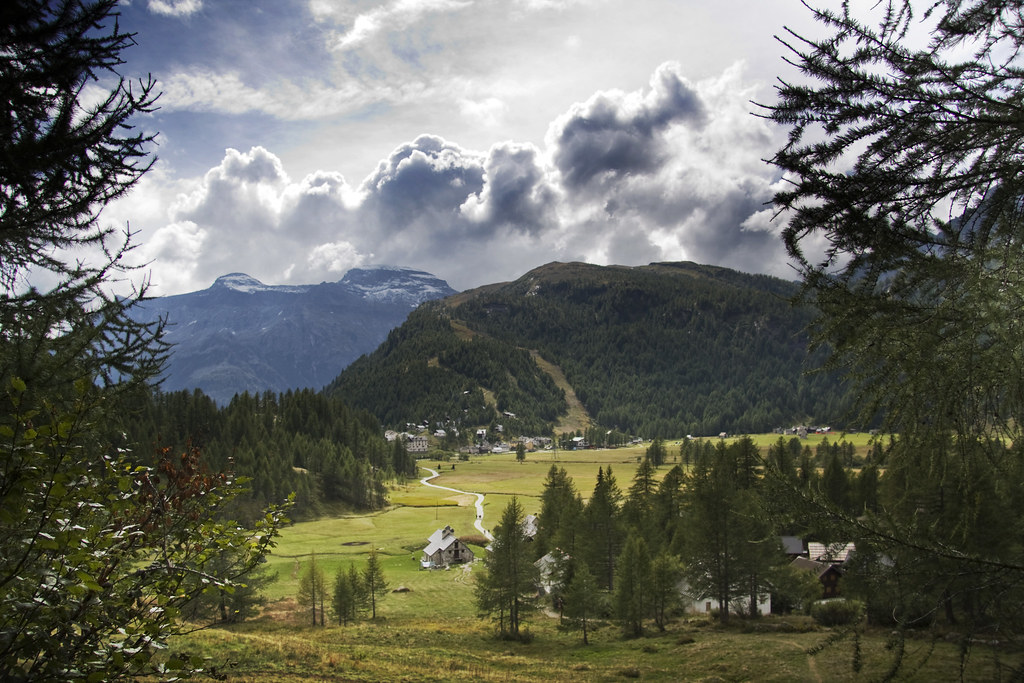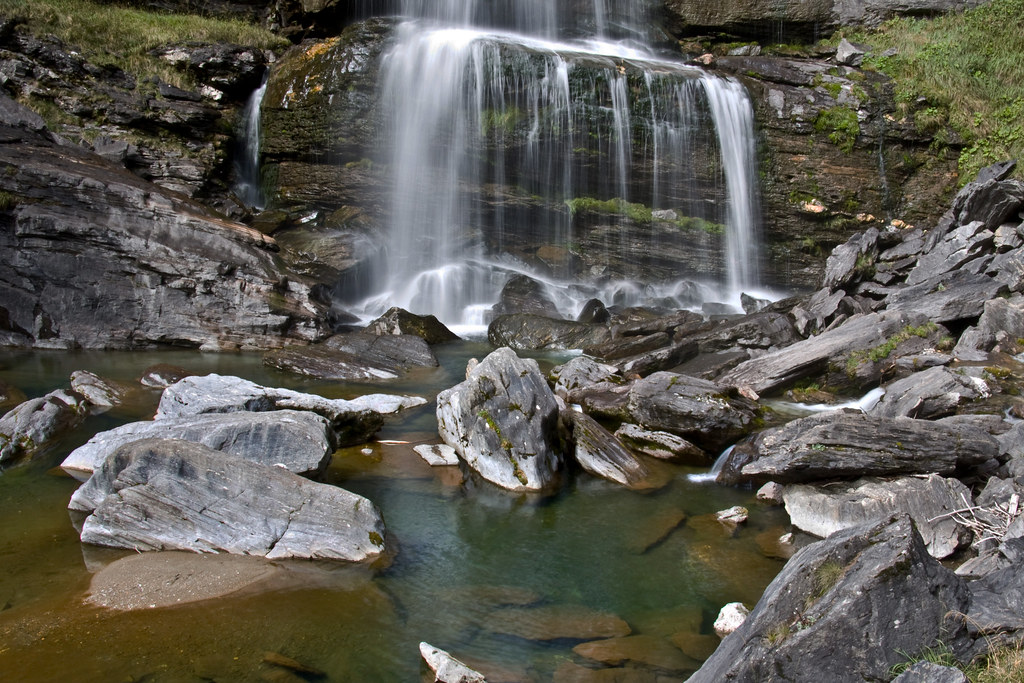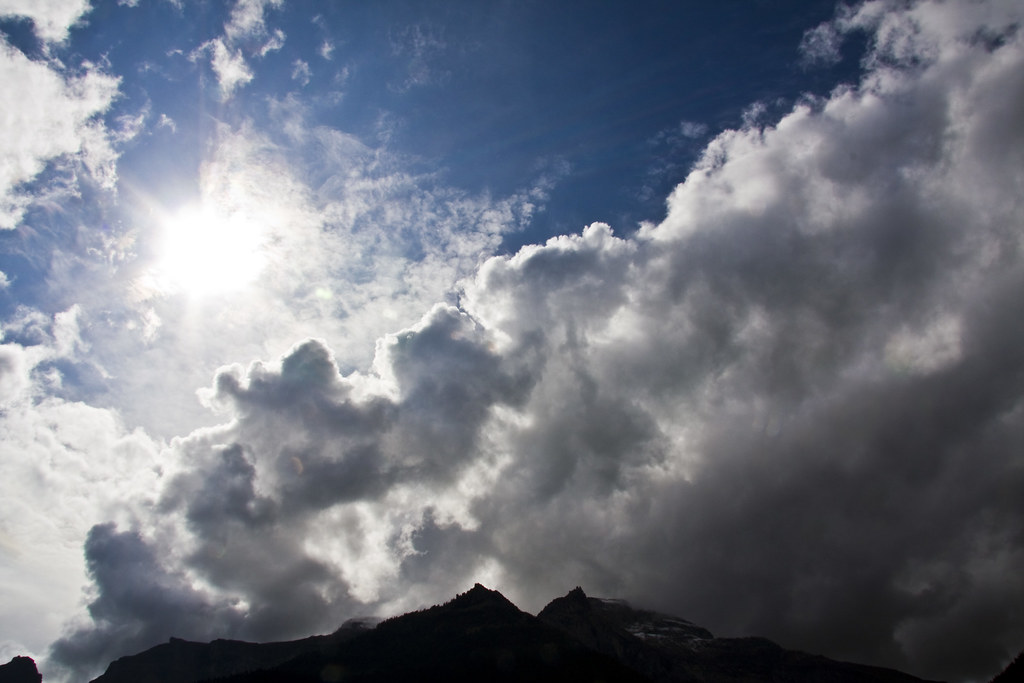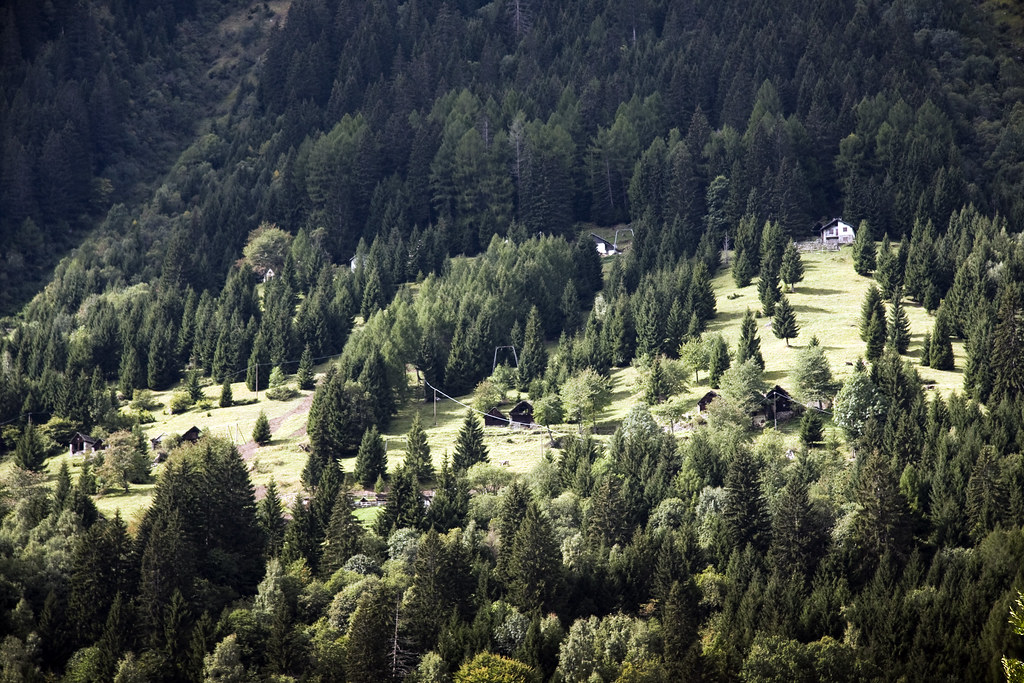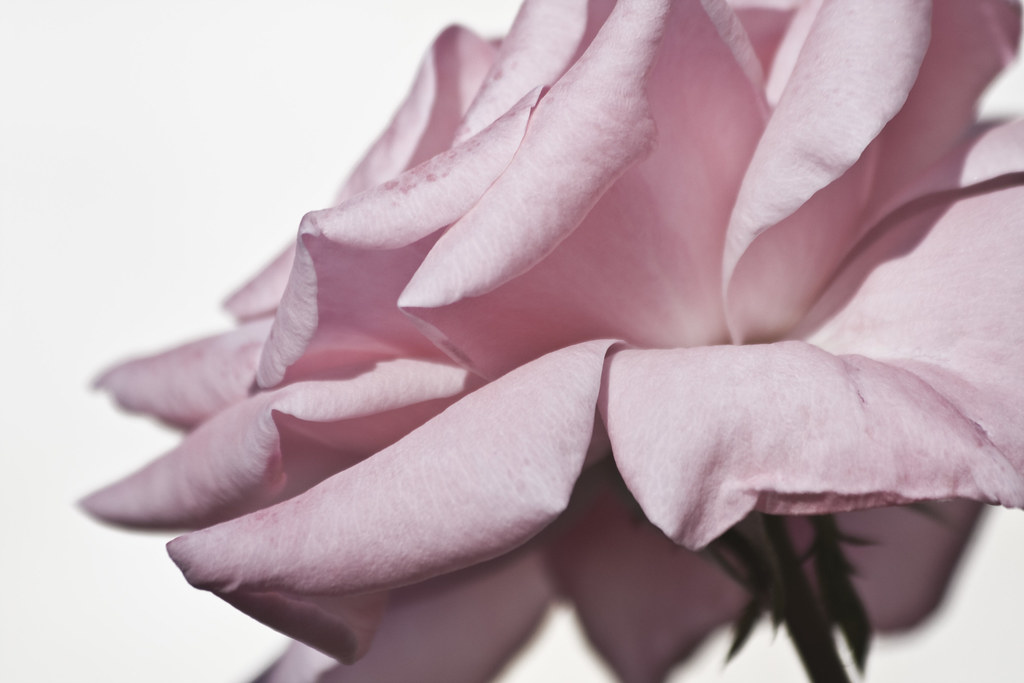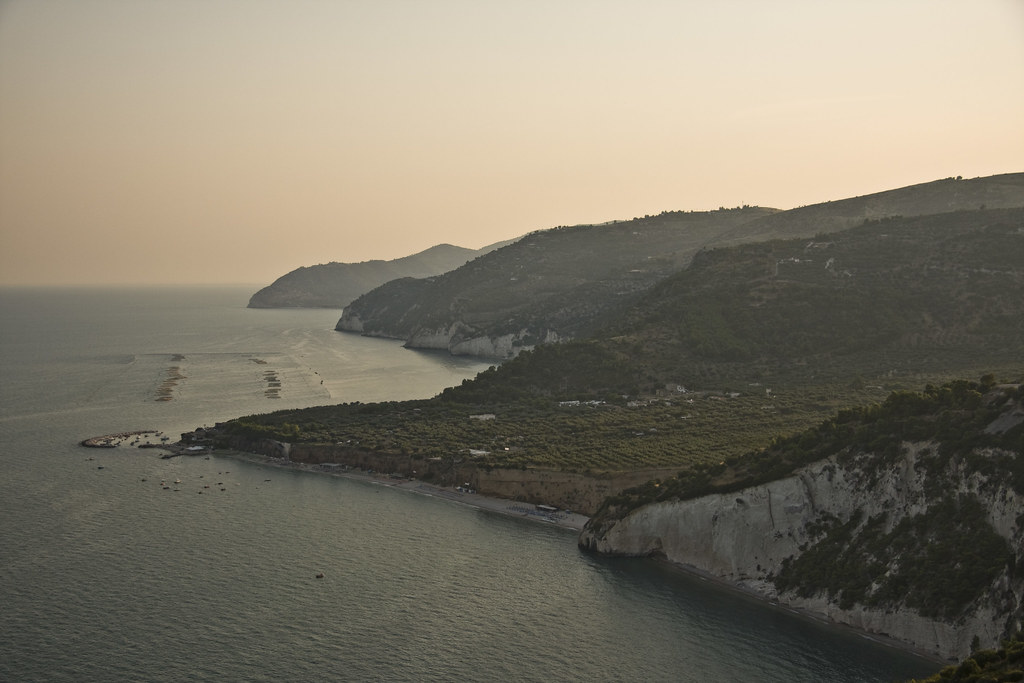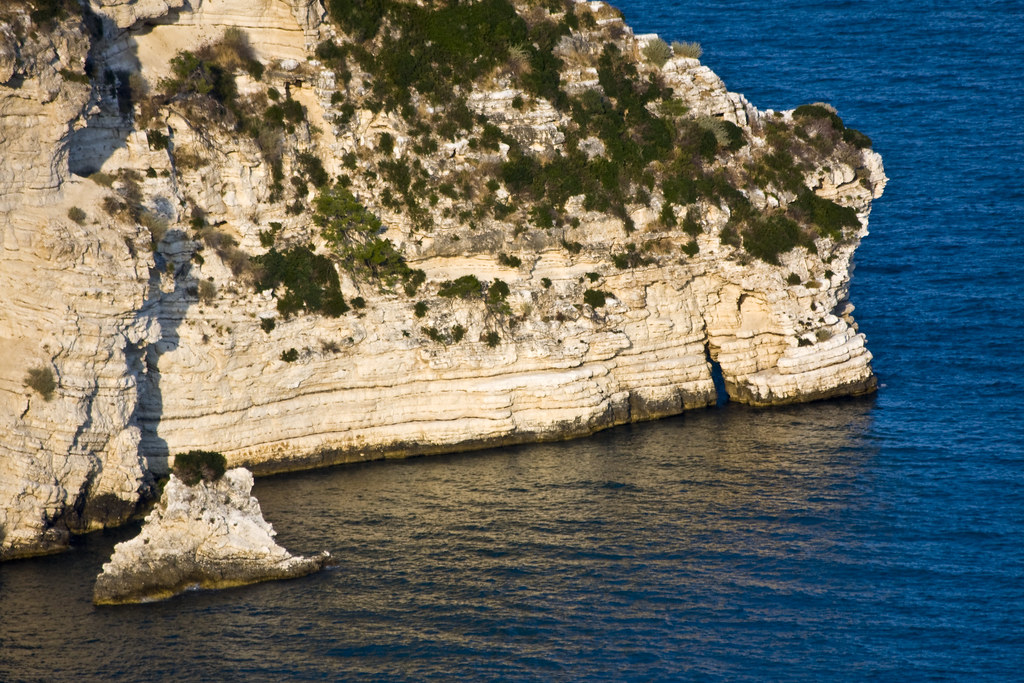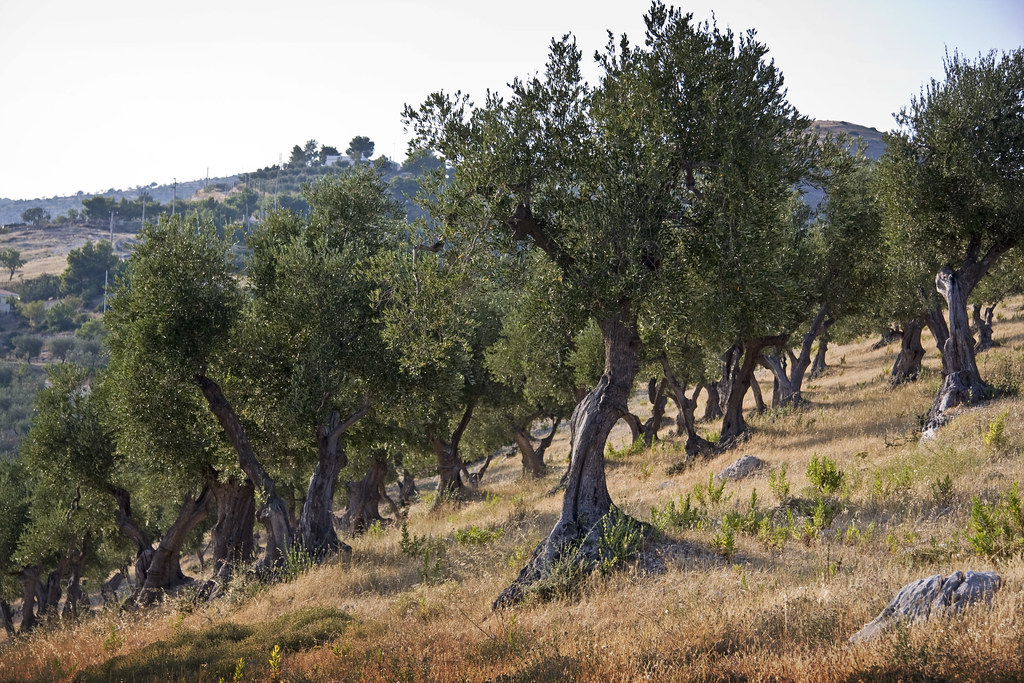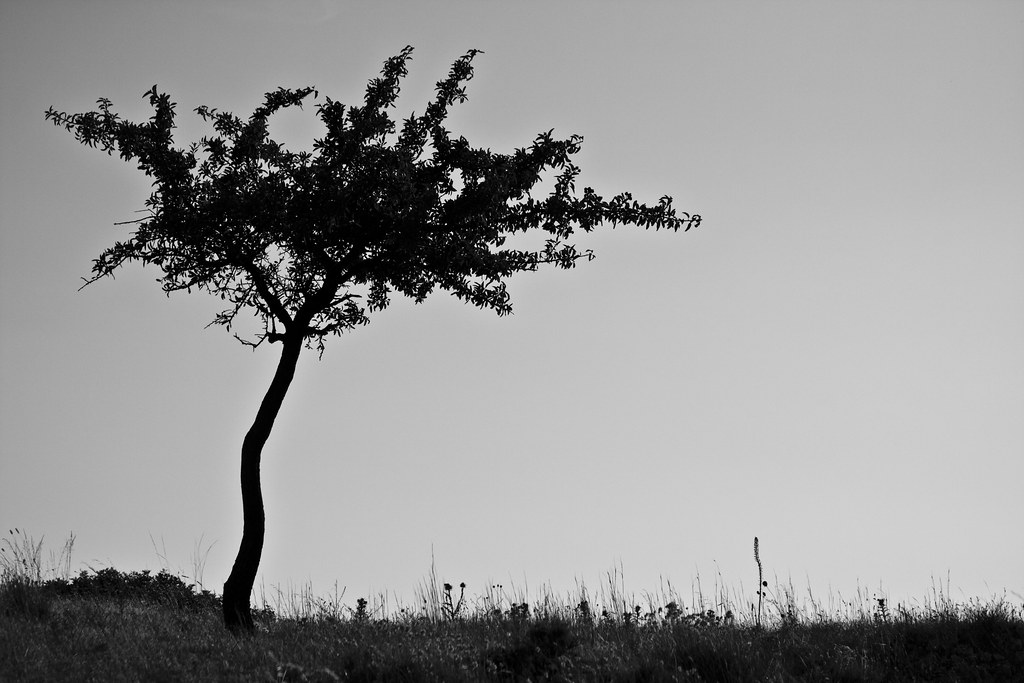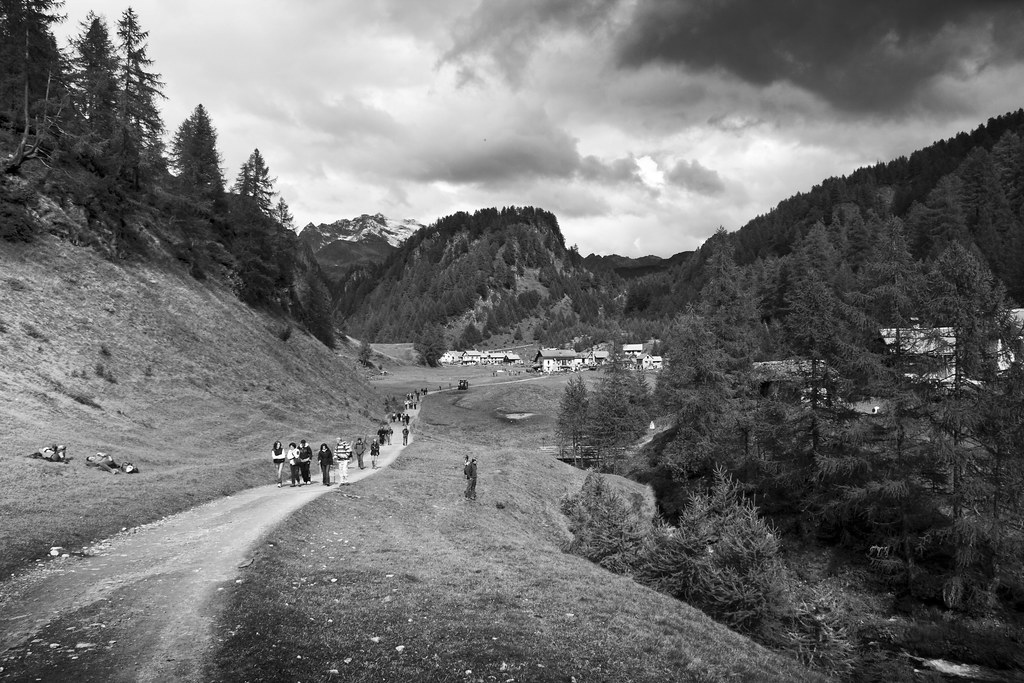
From Alpe Devero to Crampiolo through the "Vallaro"
Leaving from the plain of Devero, you follow the cart road which, running along the side of the stream, leads to the Canton locality. Nearby the small bridge leading to the CAI Castiglioni mountain hut you turn right, climbing diagonally on the large meadows towards the wood.
Once you enter the scattered vegetation, go ahead into the valley called the "Vallaro", at the foot of the P.zo Stange, from which it is possible to observe the huge landslide above the Alpe Campello. Turning left and after passing by two country buildings, one of which has been recently restored, you reach a lime cave with a lime-kiln which have fallen into disuse.
Going back to the main path, go ahead along the stream. After passing by some Alpine huts, you will enter a plain area. Walking on the left, you will briefly reach the "Lago delle Streghe", which is signalled on the maps with the toponym "Lago Azzurro", an enchanting small lake circumscribed by morainic detritus and fed by a subterranean source.
From here, after crossing a little trunk working as a bridge and after crossing the meadows, you get to the village of Crampiolo, one of the rural centers of the Alpe Devero and a starting point for further excursions.
Among the different itineraries, we suggest the tour of the Lake of Devero, also called of "Codelago", a not very demanding tour offering great views. At the end you can go back by following the same path, or following the service carriage road, or walking along a shaded path which develops into a wonderful larch wood.



